Cuba is a charismatic destination, with a vibrant culture, beautiful landscapes, and warm-hearted people. The Caribbean island nation has a rich history, and this can be seen in its architecture and museums. The old-world charm, as well as the colorful, lively nature of Cuba, is something that must be experienced firsthand. In this blog post, we will guide you through some must-see places in Cuba and share a few tips to make your trip enjoyable.
Introducing Cuba – explore its vibrant culture and beautiful landscapes
Havana
Cuba’s capital city and a World Heritage Site, Havana is, a must-visit for anyone traveling to Cuba. The city’s charming, faded architecture, and vintage cars give it a unique atmosphere that transports you back in time. The Malecón, a seaside walkway, is a popular spot for watching the sunset or soaking up the lively atmosphere as locals gather with guitars and drinks, for nightly street performances. In Havana, you can also visit the Museo Nacional de Bellas Artes, the Museum of the Revolution, or simply stroll through the colorful streets of Old Havana.
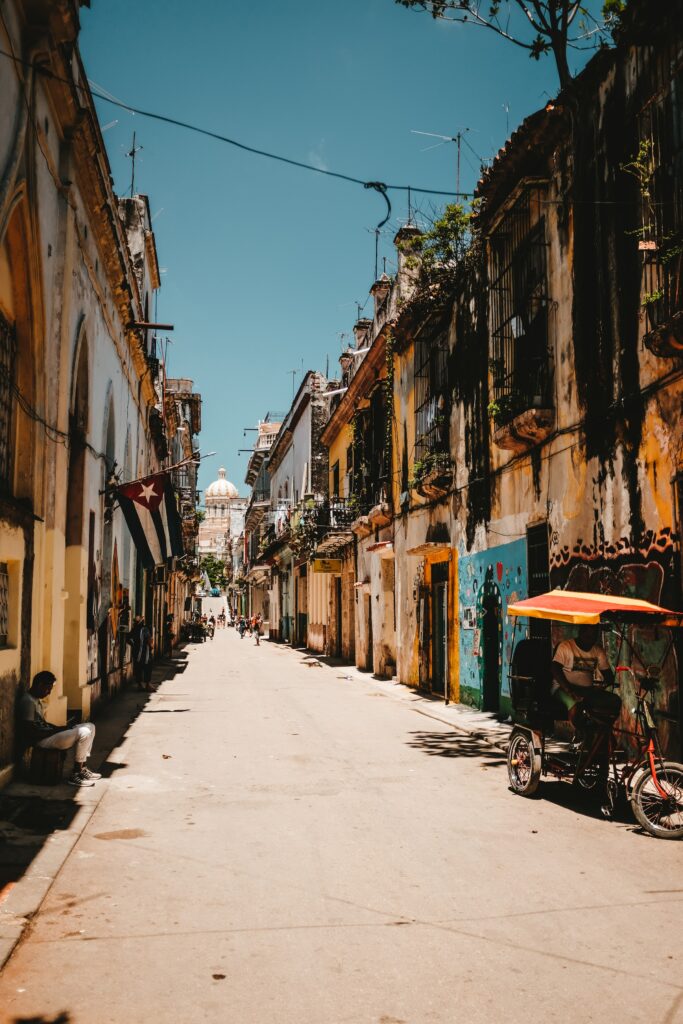
Photo Credits: Stéphan Valentin
Trinidad
A UNESCO World Heritage site, Trinidad exudes charm, history, and culture. The town’s cobblestone streets, pastel-colored houses, and classic cars provide a stunning backdrop for a leisurely stroll. Trinidad is also home to an impressive museum, the Museum of the Struggle Against Bandits. For adventure-seekers, Playa Ancon is a stunning nearby beach that offers snorkeling, diving, or just plain lounging, if you prefer.
Viñales Valley
The Viñales Valley is a picturesque, rural region located in the Pinar del Río province of Cuba. The region is known for its tobacco fields, as the area produces some of the world’s finest tobacco. Here, you can go horseback riding or hiking to see the valley’s remarkable limestone formations, called mogotes, or visit a local tobacco farm. A side-trip to the stunning Cayo Jutías beach is also a must-do.
Varadero
Varadero is a beautiful resort town located on a peninsula in northern Cuba. The town boasts stunning white sand beaches, crystal clear waters and is a popular spot for beach-lovers. You can relax on the beach, swim in the warm waters, or try out water sports such as snorkeling, jet skiing, or diving. The town also has attractions such as the Museo Municipal de Varadero, or you can visit nearby Bellamar caves.
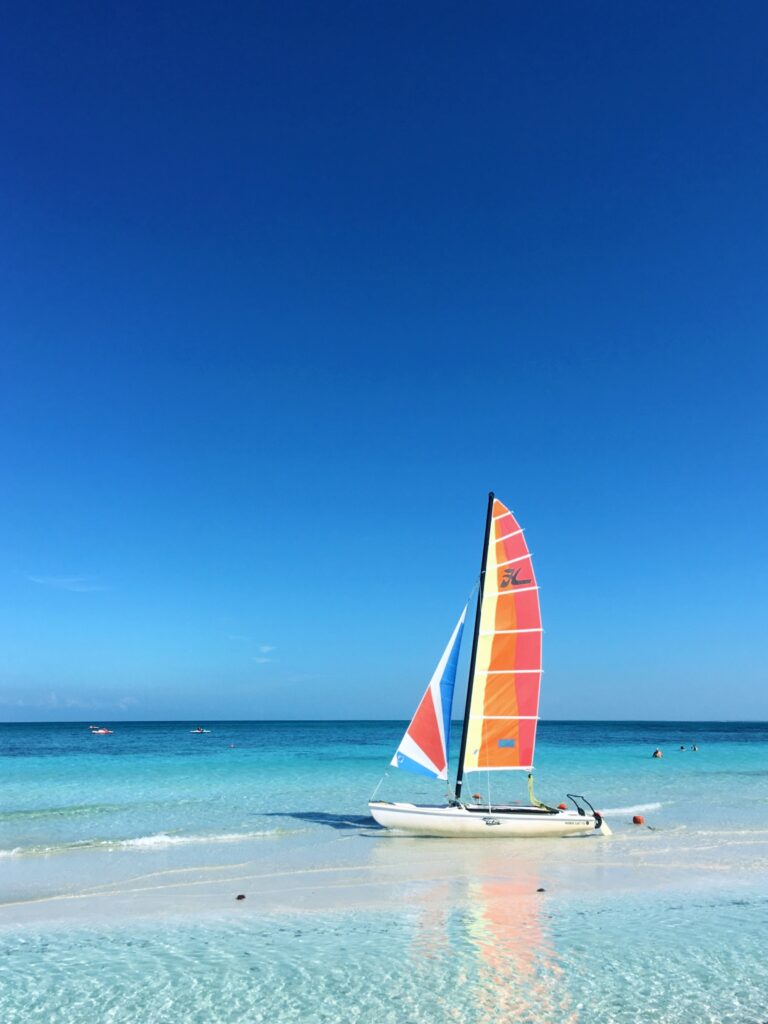
Photo Credits: Nina Ondkova
Santiago de Cuba
Santiago de Cuba is a city located on Cuba’s southeast coast. It displays a unique blend of African, Spanish, and Caribbean cultures. Here, visitors can enjoy traditional music, vibrant dance, and excellent food in the city’s famous street parties. Visit the Parque Céspedes, a vibrant town square, or take a stroll through the Museo Municipal de Santiago de Cuba. If your itinerary permits, then your trip’s worthwhile experience would be Carnaval de Santiago de Cuba – an extravagant annual festival that takes place in summer.
Discover Cuban Cuisine – be prepared for a culinary adventure!
Classic Cuban Dishes
Cuban cuisine is a combination of African, Spanish, and Caribbean influences, so expect a flavorful and colorful meal. One of the classic dishes you must try is Ropa Vieja, which means “old clothes” in Spanish. It’s a slow-cooked shredded beef or lamb dish that’s served with rice and beans. Another classic is a Cuban sandwich, also known as a Cubano, which is loaded with roasted pork, ham, pickles, mustard, and Swiss cheese.
Street Foods
Street foods are a staple in Cuban cuisine, and they’re sure to satisfy your cravings. One of the most popular street foods is a Churro, a deep-fried doughnut dusted with sugar. Another street food favorite is the beef empanadas, a pastry filled with meat and spices and deep-fried until golden and crispy. Don’t forget to try the roasted peanuts or “maní tostado,” a classic street snack sold all over Cuba.
Seafood
Cuba is an island nation, which means that it has a thriving seafood scene. One of the must-have seafood dishes is grilled or pan-seared shrimp, served with lime and parsley butter. Another seafood delicacy is the “Camarones al Ajillo,” a garlic shrimp dish cooked in a white wine sauce. Don’t forget to pair your seafood with a classic Cuban cocktail, like the Cuba Libre or the Mojito.
Desserts
Cuban cuisine has a sweet tooth, and its desserts are a reflection of that. Tres Leches Cake is a classic Cuban dessert, made from sponge cake soaked in three types of milk – evaporated milk, condensed milk, and heavy cream. Another dessert worth trying is the Flan, a creamy custard topped with caramel sauce. Finally, you must indulge in some Cuban coffee, also known as Cafe con Leche, a delicious way to end your meal.
Vegetarian and Vegan Options
If you’re a vegetarian or vegan, Cuban cuisine has got you covered. Black Beans and Rice, or Congri, is a classic vegan side dish that is served with most meals. Vegetarian options include the Papas Rellenas, a potato ball stuffed with vegetables and spices and deep-fried until crispy. Vegans can also try the Tostones, crispy plantains served with a side of dipping sauce.
Top Attractions in Havana – take a stroll around the old town or go for a ride in the colorful vintage cars
Stroll Around the Old Town
Havana’s Old Town is a UNESCO World Heritage site and is famous for its well-preserved colonial-era architecture. Wander through the narrow, cobbled streets and admire the colorful buildings, grand plazas, and historic landmarks. Some of the must-visit attractions in Old Havana include Plaza Vieja, Plaza de la Catedral, and the Museum of the Revolution.
Ride in a Vintage Car
Havana is full of vibrant, colorful vintage cars, and taking a ride in one is a must-do activity. These classic cars are an iconic symbol of Havana’s past, and many of them have been lovingly restored to their former glory. You can hire a car and driver to take you on a tour of the city or take a ride in a vintage taxi to one of Havana’s many attractions.
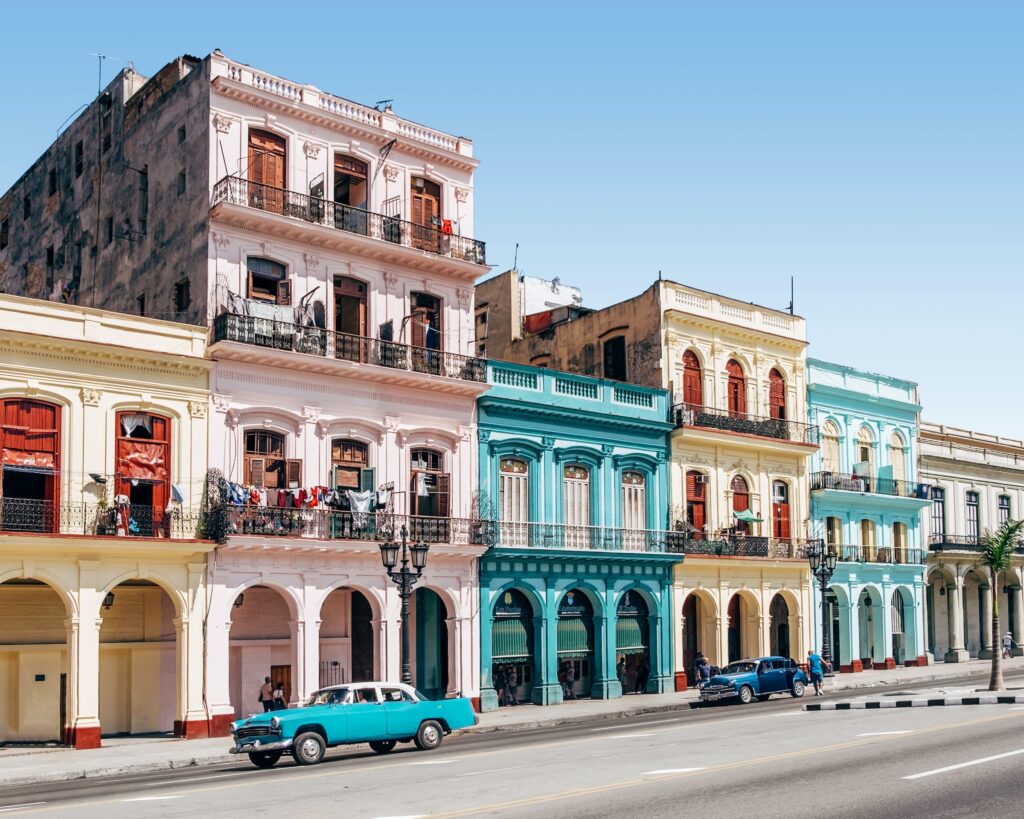
Photo Credits: Spencer Everett
Visit the Malecon
The Malecon is Havana’s famous seafront promenade and is the perfect place to soak up the city’s atmosphere. The five-mile-long walkway stretches along the coast and offers stunning views of the sea, the city, and the many historic buildings that line the route. It’s the ideal spot to people watch, enjoy a street performance, or just relax and take in the view.
Explore the Art Scene
Havana has a thriving art scene, with numerous galleries and museums showcasing the works of talented Cuban artists. Some of the must-visit museums include the National Museum of Fine Arts, the Fototeca de Cuba, and the Havana Biennial. You can also take a walking tour of the city’s street art and murals, which are a testament to Havana’s vibrant and creative culture.
Dance the Night Away
Havana is famous for its lively music scene, and there are numerous bars, clubs, and music venues where you can experience it for yourself. Try a lively salsa club or a rocker bar if that’s more your style. Havana’s nightlife is vibrant, and the perfect way to end a day spent exploring the city.
Exploring Cuban History & Heritage – visit museums, monuments, and places of interest to learn more about the country’s past
Havana Vieja
The Old Havana section of the Cuban capital is like a living museum, where the cobblestone streets and pastel colored buildings tell the story of a bygone era. Foodies and art lovers flock to its historic squares like Plaza de la Catedral, Plaza Vieja, and Plaza de Armas, while music lovers enjoy the live bands at bars like Caballo Blanco. A stroll through these streets will reveal hidden treasures in the form of beautifully preserved architectures, including splendid churches, cathedrals, and historic fortresses.
Museo de la Revolución
The Museum of the Revolution in Havana is a must-visit for history buffs and political scholars alike. The museum was built in 1920 as the Presidential Palace, but after the Cuban Revolution of 1959, it was converted into a museum to showcase the events leading up to the Revolution, including the causes and effects. The building itself, designed by Cuban architect Carlos Maruri, is of great significance and is one of the most visited attractions in Cuba.
Cienfuegos
Located on the southern coast of Cuba, about 250 km from Havana, Cienfuegos is known for its French-inspired architecture and rich cultural heritage. Known as the “Pearl of the South,” the city boasts of several iconic landmarks, including the Tomás Terry Theater, which was built in 1890. Visitors to Cienfuegos can explore the hidden gems of its historic district, including the Palacio de Valle, Punta Gorda, and the Jardín Botánico de Cienfuegos.
Che Guevara Mausoleum
Che Guevara, one of Cuba’s most iconic figures, has been immortalized in the Che Guevara Mausoleum located in Santa Clara. Built in the 1980s, the mausoleum is a sort of shrine to the revolutionary hero, who played a vital role in the Cuban Revolution. Visitors to the mausoleum can see exhibits featuring his writings, photographs, and personal artifacts.
Trinidad
Declared a UNESCO World Heritage site in 1988, Trinidad is a beautiful city on Cuba’s southern coast that has remained essentially unchanged since the 19th century. The city’s ancient cobblestone streets are lined with bright colored buildings, many of which are historical landmarks in their own right. Visitors to Trinidad can explore some of the city’s most significant historical landmarks, including the Church of the Holy Trinity, the National Museum of the Struggle Against Bandits, the Palacio Brunet, and the San Francisco de Asis convent.
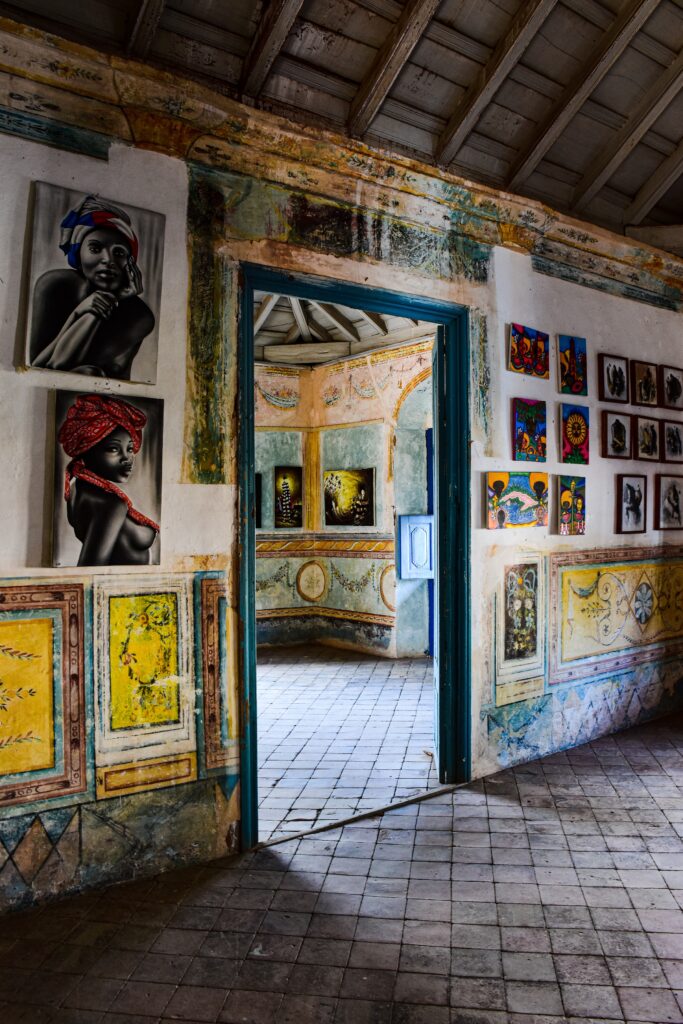
Photo Credits: AXP Photography
How to Get Around Cuba Safely & Easily – with tips on transportation and travel tips for the best experience
Taxis and Classic Cars
First on the list are taxis and classic cars, which are integral to Cuba’s transportation landscape. A taxi ride can cost anywhere between $2 and $25, depending on the destination and distance. If you’re in Havana, you can hop on a classic 1940s or 1950s car to take you on tour around the city. The ride may cost you more than a regular taxi, but it’s a unique experience to cruise in a classic car while admiring beautiful Havana city. On the other hand, you can catch a government-run taxi if you’re on a budget and want a cheaper fare.
However, it’s essential to keep your safety in mind while riding in taxis. Always lock the doors when inside, and only use licensed taxis and classic cars. Illegal taxis may be cheaper, but they’re not worth the risk.
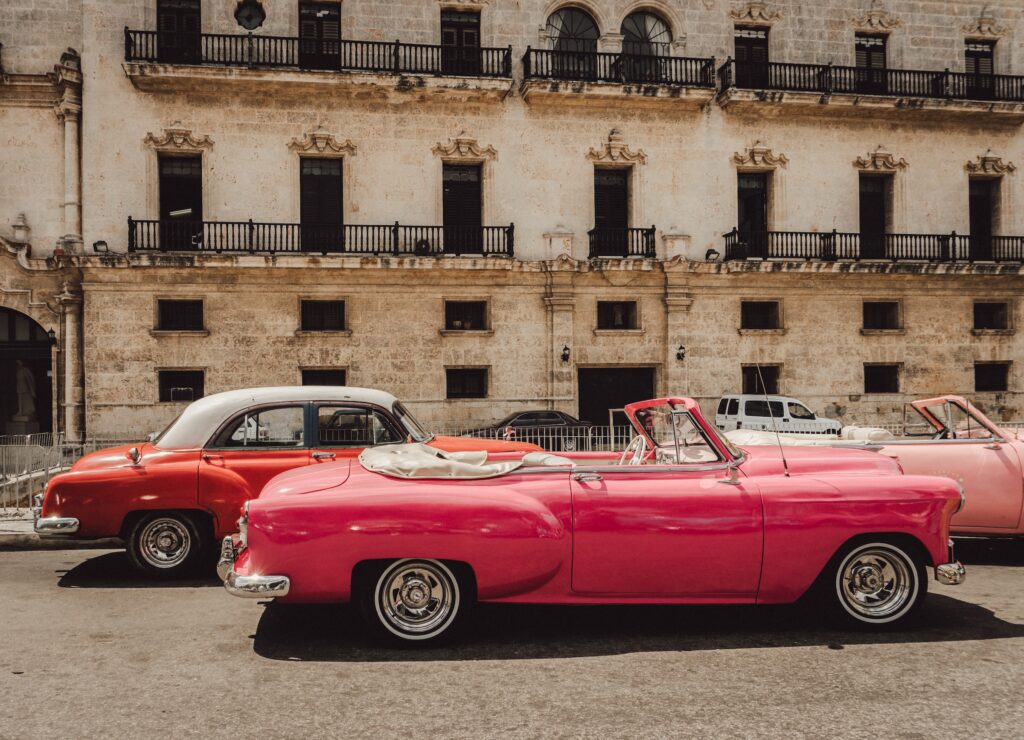
Photo Credits: Polina Kuzovkova
Public Transportation
Cuba’s public transportation includes buses, trains, and shared taxis known as ‘collectivos.’ Buses are the most popular and affordable mode of transportation in Cuba. You can buy tickets for government-run Viazul buses at different stations, or use the Astro system if you’re traveling to less touristy locations. Train travel is slow but provides an opportunity to see the countryside and meet locals while on a journey. If you’re traveling in a larger group, shared taxis are an excellent option, as they can take you directly from one destination to another at reasonable prices.
Safety is crucial on public transportation, as it’s often crowded and might be targeted by pickpockets. Keep an eye on your belongings and avoid flashing expensive items while on board.
Bicycles and Motorbikes
If you’re an adventurer who wants to make their way around the island while feeling the wind on your face, renting a bike or motorbike is perfect for you. Biking is an excellent way to explore cities and small towns and can be rented inexpensively. Still, it’s crucial to stay vigilant on the roads and wear appropriate safety gear to avoid accidents. If you prefer motorbikes, they’re widely available in Cuba, and you can rent them per hour or for multiple days. It’s important to have experience driving a motorbike before renting and ensure you wear a helmet throughout the journey.
Walking
Finally, walking is a cheap, healthy, and enjoyable way of moving around Cuba. Exploring cities and small towns on foot is a great way of taking in all the little details, such as street art, hidden cafes, and local shops. You can wear comfortable shoes and take your time, stopping whenever you want to take a photo or have a snack. However, it’s crucial to stay alert and be mindful of your surroundings, particularly when walking through secluded areas.
Cuba is an amazing holiday destination, with a beautiful blend of island lifestyle and culture; for anyone traveling, it offers experiences that you will remember for a lifetime. We hope this blog post has inspired you to plan a trip to Cuba and explore the beautiful landscapes and vibrant culture the country offers fully. Remember to follow the local customs, be respectful to the locals, and take the time to submerge yourself in the country’s beautiful history and culture. Safe travels!
Photo Credits: Alexander Kunze

Welcome to the Enchanting World of Cuba: Uncover its Rich Heritage and Unmissable Destinations!